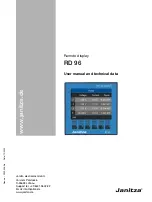
Use the adjustment diagram (Fig. 4) as a
guide to change the set point temperature
from the default setting. One turn of the set
point adjuster corresponds to a change in set
point temperature of approx. 13 K.
The set point temperature together with the
point at which the regulator is fully closed shift
to lower temperatures when the set point
adjuster (3) is turned clockwise
P
.
3.1
New adjustment
Adjustment of the set point temperature from
an unknown setting:
Note!
The ambient temperature must be
within the set point range.
4
Remove cap (3.1) and undo lock nut
(3.2). Make sure that the medium flow
and outside air have the same tempera-
ture.
4
Turn the set point adjuster (3) counter-
clockwise until the flow noise inside the
regulator ceases, i.e. the valve is closed.
4
Calculate the temperature difference be-
tween the momentary ambient
temperature and the required set point
temperature (T
set point
) to be adjusted.
4
Divide the calculated temperature differ-
ence by 13. The result shows how may
turns of the set point adjuster (Fig. 4) are
required.
4
Turn the set point adjuster clockwise by
the determined number of turns.
4
Lock set point adjuster (3) with the lock
nut (3.2) and screw cap (3.2) back on.
4
Secure setting, if necessary, with sealing
wire through the holes in the cap and
valve.
3.2
Set point adjuster with set
point indication
In a special version, the set point adjuster is
fitted with a marked ring for set point
indication. The distance between two marks
corresponds to a temperature difference of
approx. 10 K (10 °C).
EB 2090 EN
7
Set point adjustment






























